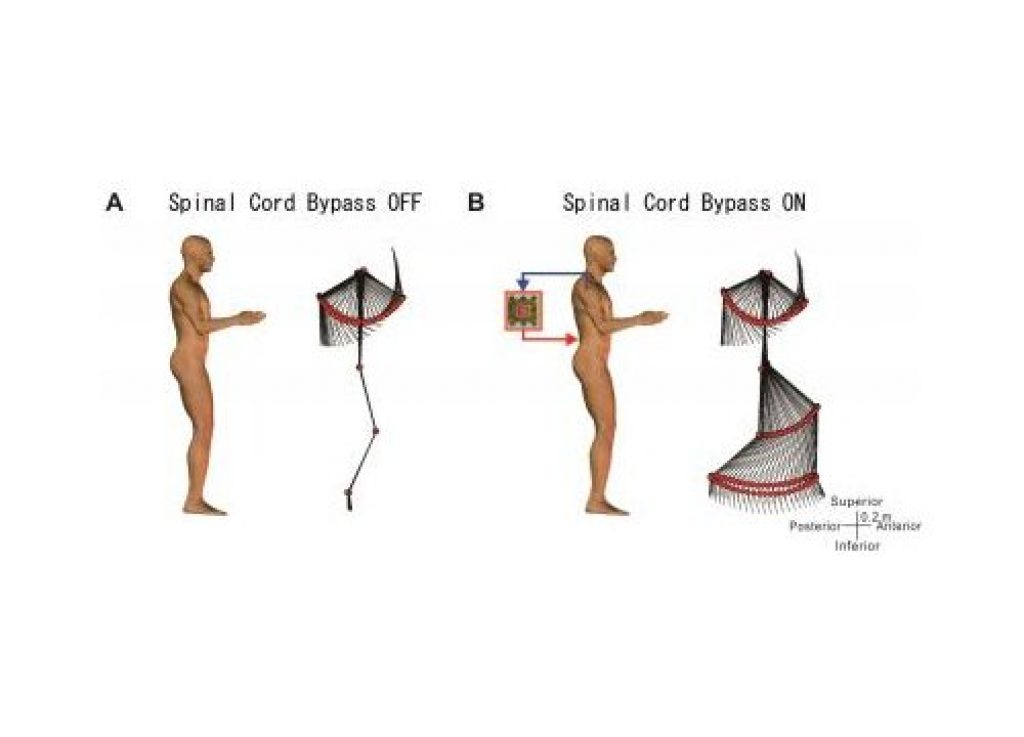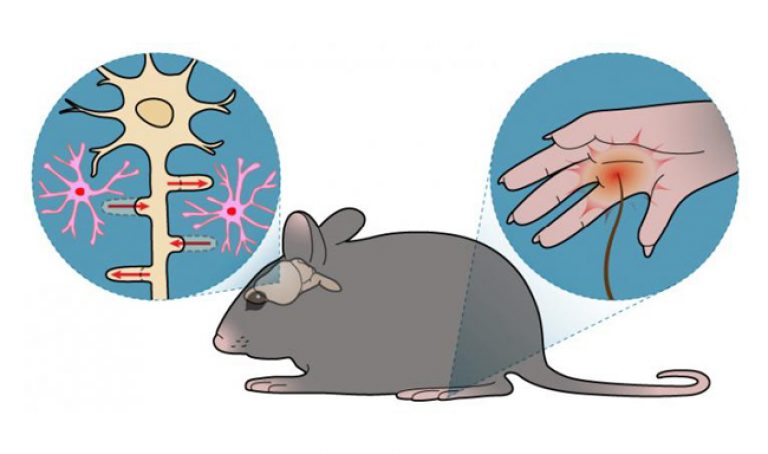
AsianScientist (Aug. 20, 2014) – A Japanese research group has successfully made an artificial connection from the brain to the locomotion center, bypassing the spinal cord with a computer interface. This research, published in the Journal of Neuroscience, allowed subjects to perform a walking-like behavior in their legs by swinging their arms.
Neural networks in the locomotion center of the spinal cord are capable of producing rhythmic movements, such as swimming and walking, even when isolated from the brain. The brain controls the spinal locomotion center by sending commands to the spinal locomotion center to start, stop and change waking speed. In most cases of spinal cord injury, the loss of this link from the brain to the locomotion center causes problems with walking.
Although gait disturbance in individuals with spinal cord injury is attributed to the interruption of neural pathways from brain to the spinal locomotor center, neural circuits located above and below the lesion maintain most of their functions. An artificial connection that bridges the lost pathway and connects brain to spinal circuits has potential to ameliorate the functional loss.
Led by Shusaku Sasada, research fellow and Yukio Nishimura, associate professor of the National Institute for Physiological Sciences (NIPS), National Institutes of Natural Sciences (NINS), a team of researchers has now come up with a way of bypassing the functioning brain and locomotion center, using a computer to compensate for the lost pathways and enabling individuals with spinal cord injury to regain walking ability.
Since arm movement is associated with leg movement during walking, the team used muscle activity in the arm as a surrogate for brain activity. The computer interface allowed subjects to control a magnetic stimulator that was non-invasively linked to the spinal locomotion center.
Neurologically intact subjects were asked to relax their legs and move their arm muscles to control the computer interface connected to the locomotion center. In doing so, the subjects were able to perform a walking-like behavior in their legs and could control step cycle violtionally via their arm muscles. This ability to control their legs using their arms was disabled when the computer bypass was switched off.
“We hope that this technology would compensate for the interrupted pathways by sending an intentionally encoded command to the preserved spinal locomotor center and regain volitionally-controlled walking in indviduals with paraplegia. However, the major challenge that this technology does not help them to dodge obstacles and to maintain posture. We are carefully working toward clinical application in near future”, Nishimura said.
Click here to see a video of a subject controlling his legs with his arms.
The article can be found at: Sasada et al. (2014) Volitional Walking via Upper Limb Muscle-Controlled Stimulation of the Lumbar Locomotor Center in Man.
——–
Source: National Institutes of Natural Sciences.
Disclaimer: This article does not necessarily reflect the views of AsianScientist or its staff.












